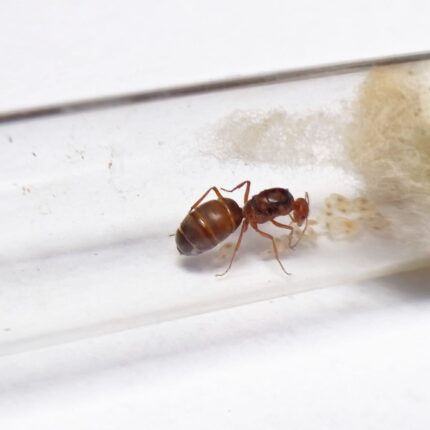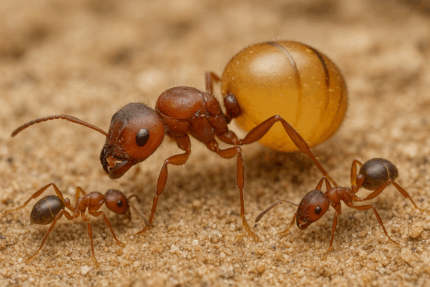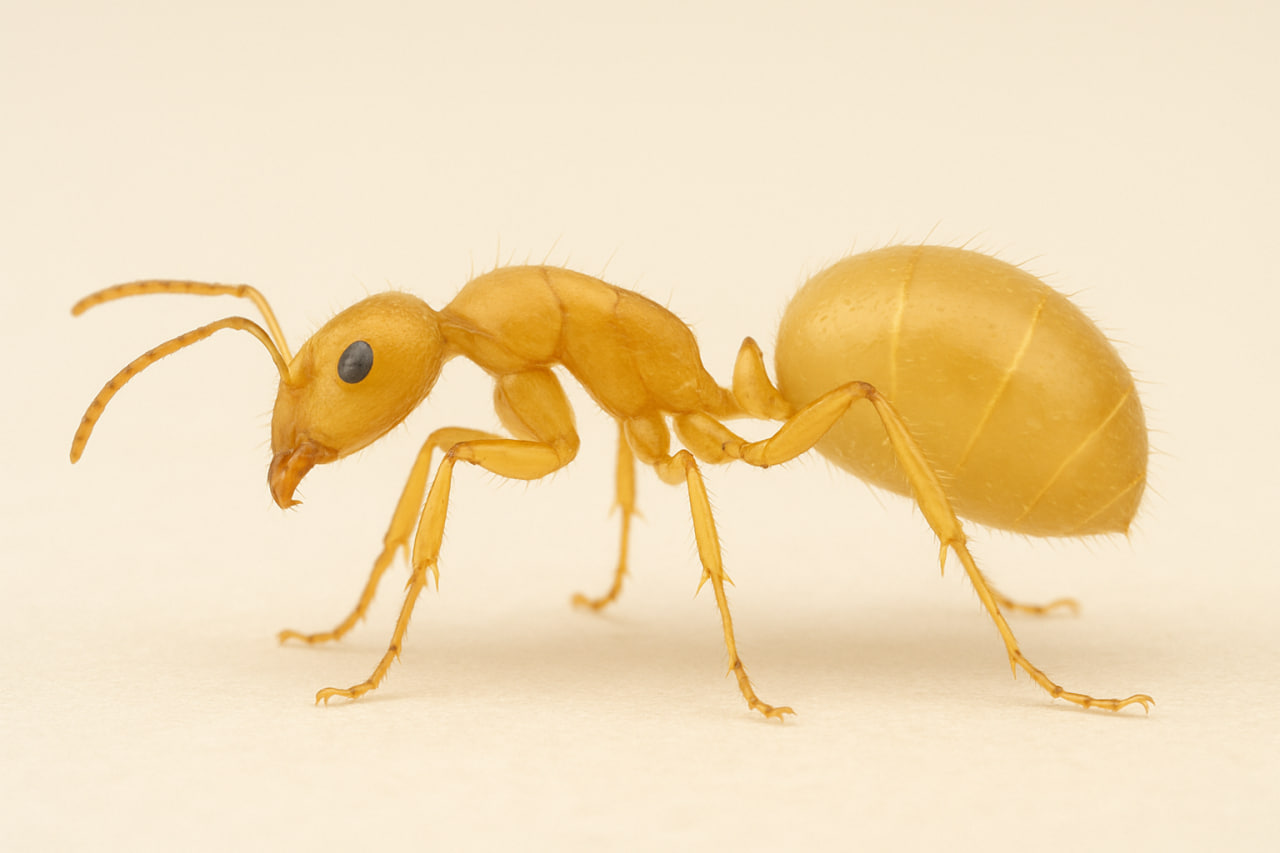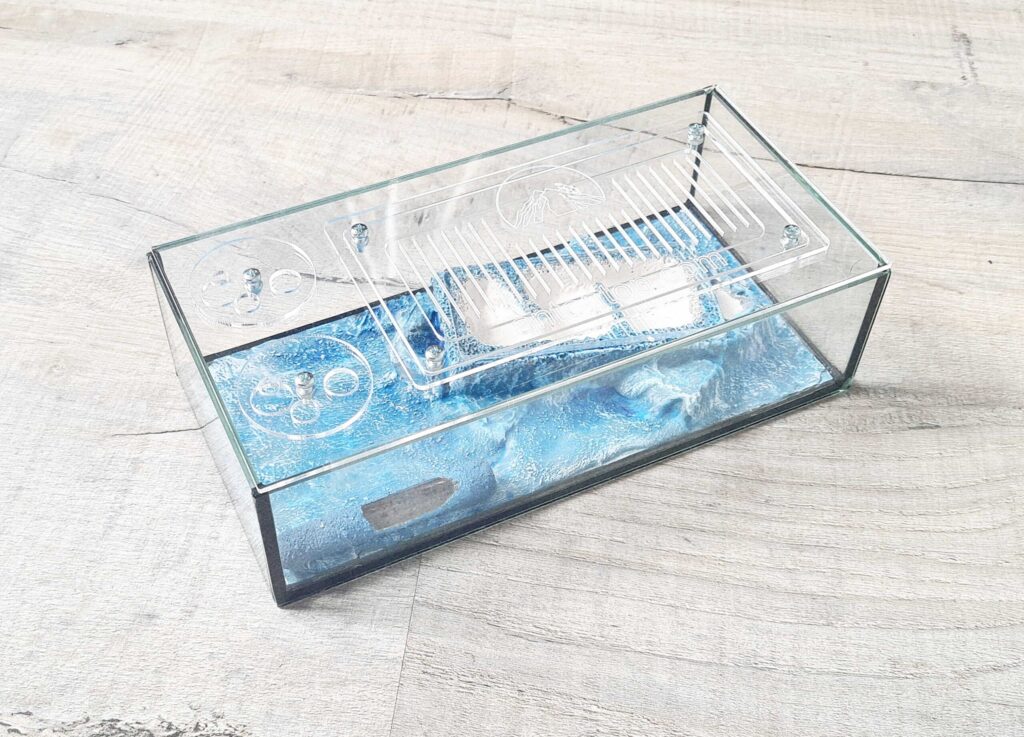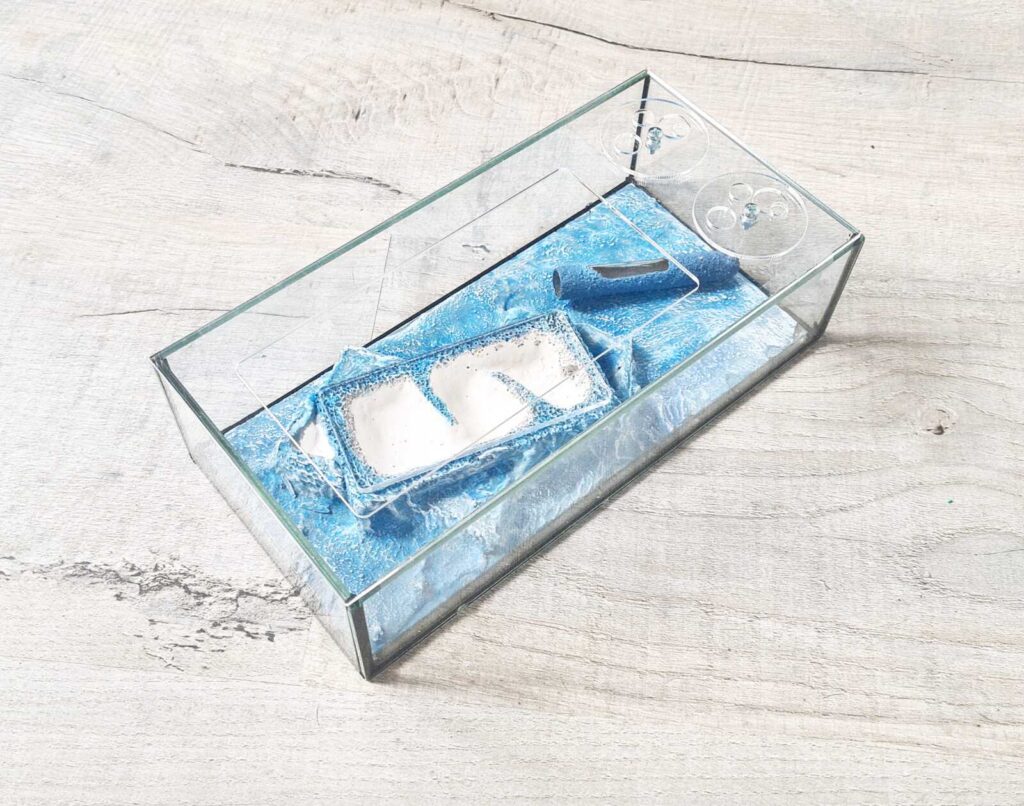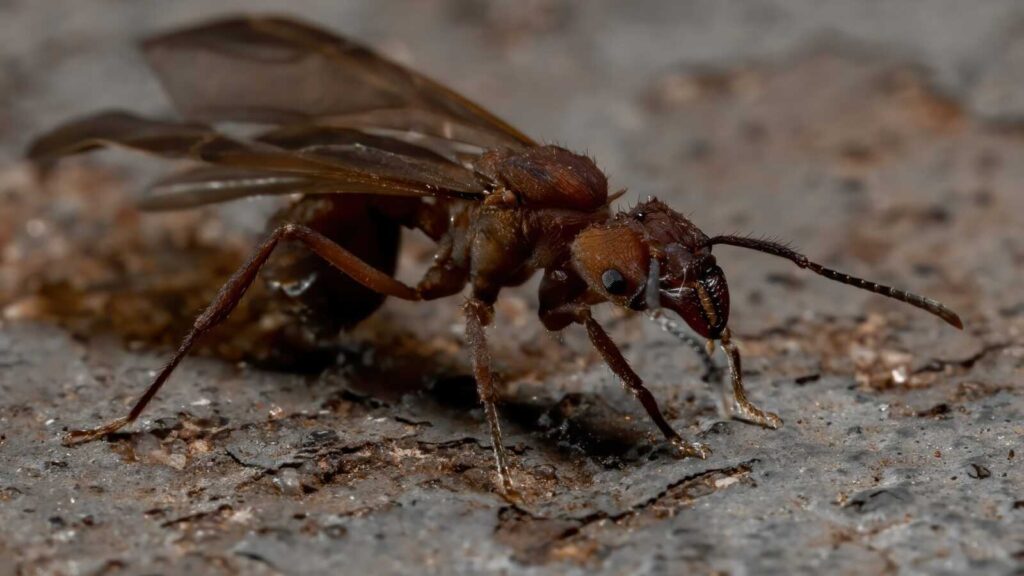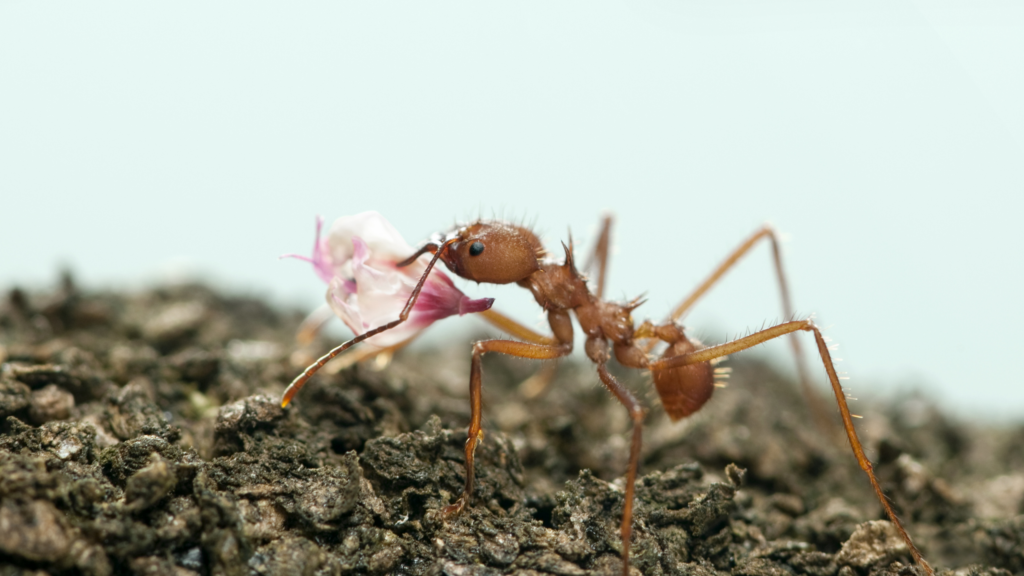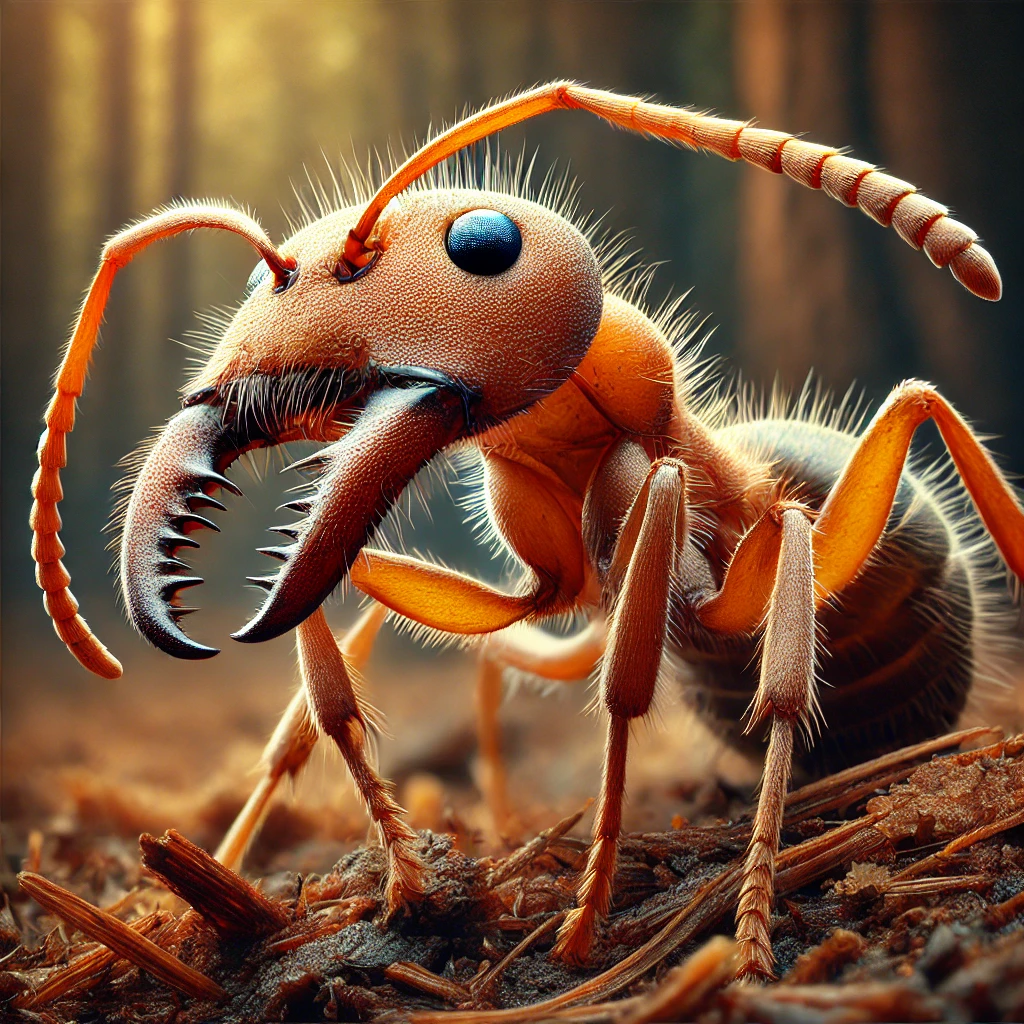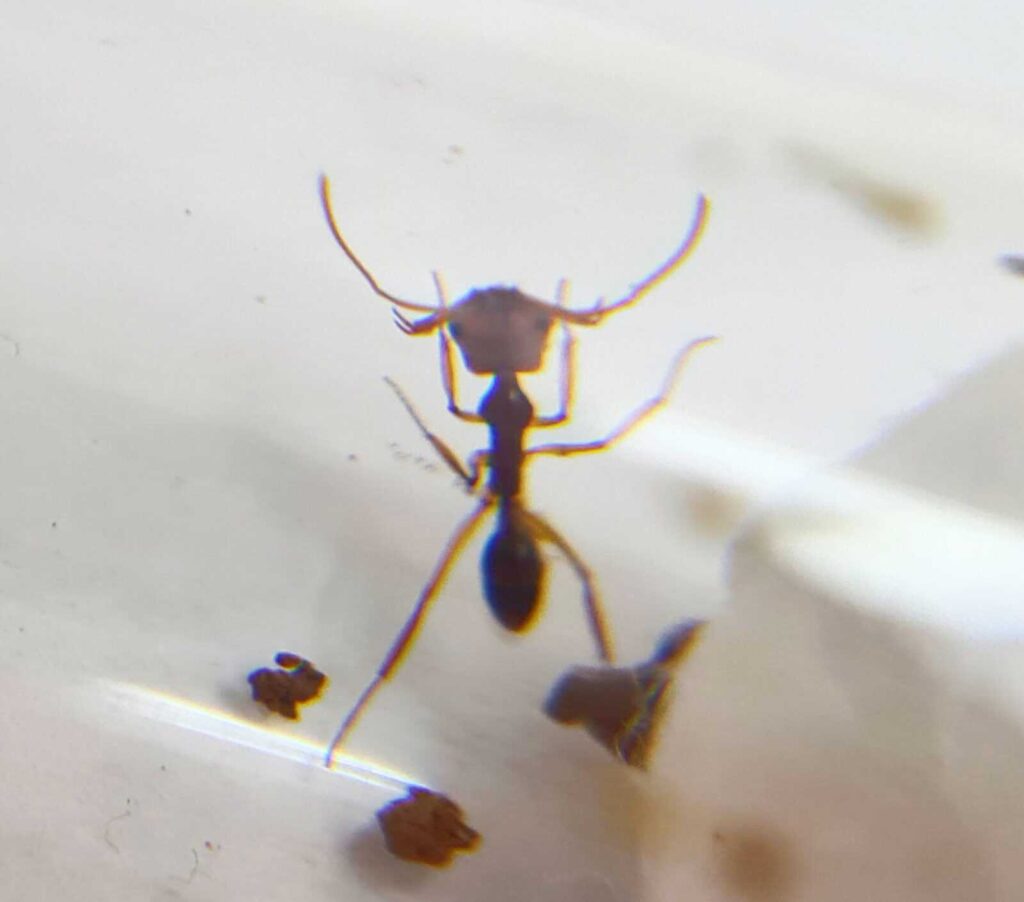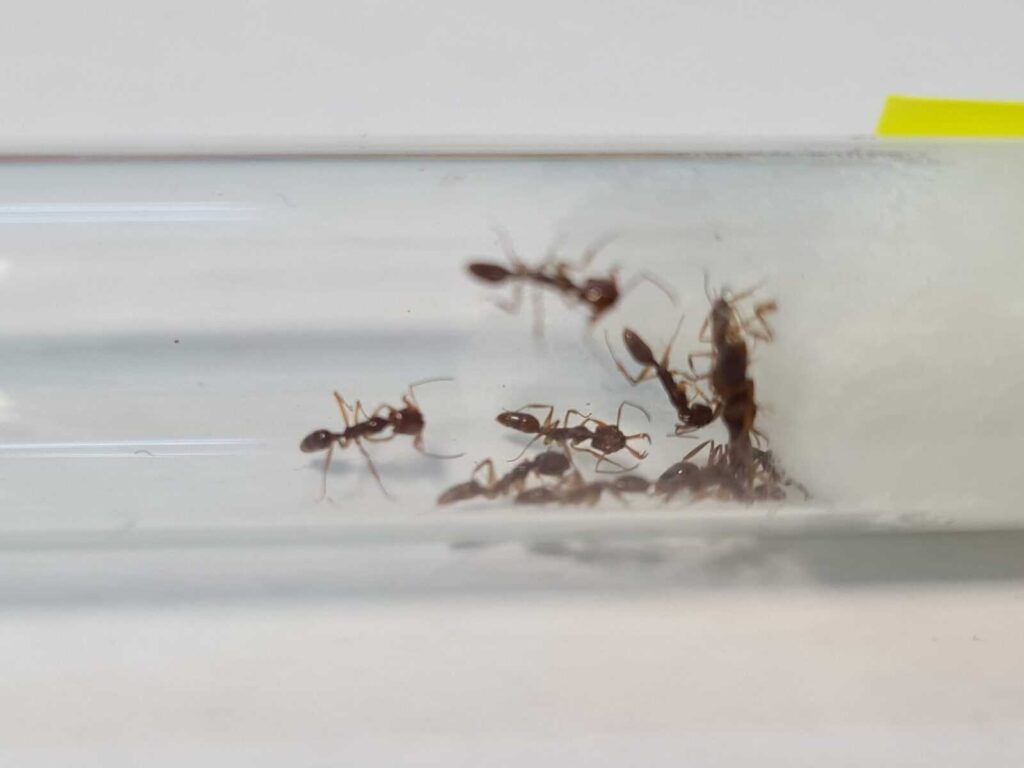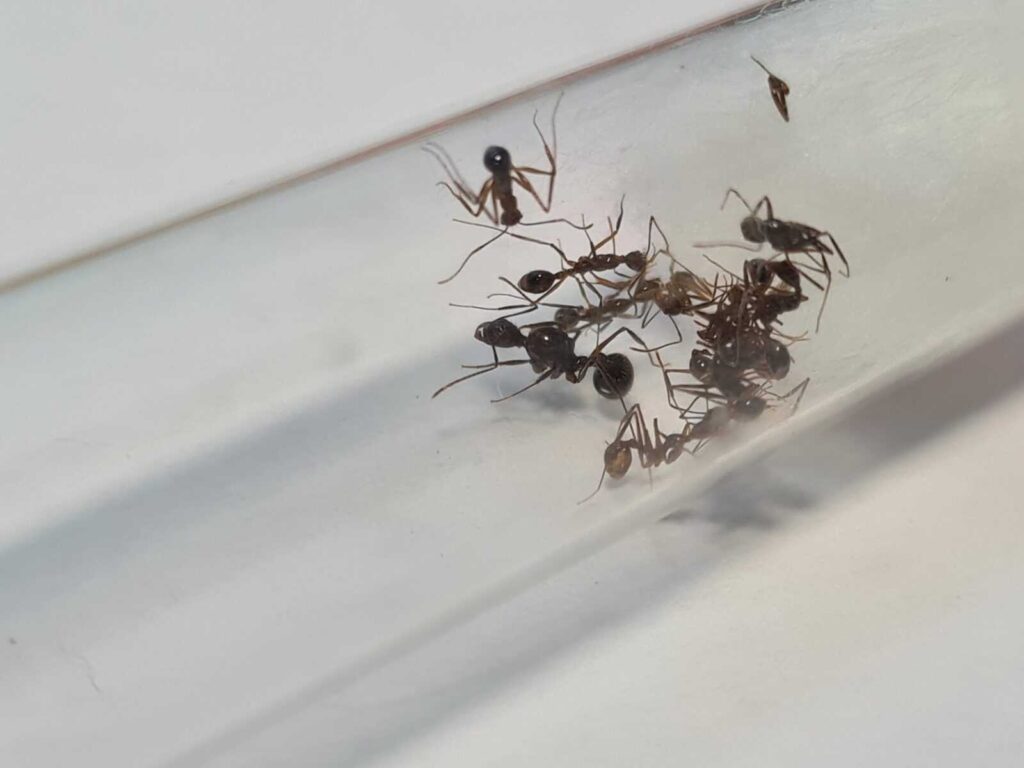Myrmecocystus testaceus
549,90 zł – 869,90 zł
Worldwide shipping
Free delivery over 500 PLN
The highest quality of goods
Live delivery guarantee
24/7 Personal Support
Fair Prices
Description
Myrmecocystus testaceus is a monogynous ant species with a medium development rate. Queens typically measure 11–12 mm, and workers range from 4–8 mm. This species is distinguished by its lighter, yellowish to orange-tan coloration (hence the name testaceus), often with a contrasting darker gaster. Like other Myrmecocystus species, it features honey pot workers (repletes) that store liquid food in their distended abdomens.
Additional information
| Behavior | |
|---|---|
| Difficulty in breeding | |
| Origin | |
| The size of ants | |
| Wintering |
Myrmecocystus testaceus Care Sheet
Colony Type: Monogynous
Colony Size: Up to 8,000–10,000 workers
Development Speed: Medium
(Brood develops faster in consistently warm environments with a rich protein supply)
Size:
• Queen: 11–13 mm
• Workers: 4–8 mm
Coloration:
Myrmecocystus testaceus is known for its light yellow to orange-brown body, giving it a testaceous (brick-like or clay-colored) appearance. Both workers and queens often have a uniform, matte texture, setting them apart from the darker Myrmecocystus species.
Diet:
• Insects (e.g., fruit flies, crickets, roaches – dead or live)
• Syrup (4:1 mix of water to sugar or honey)
• Fruits (apple, grape, banana, melon)
• Vegetables (e.g., cucumber, carrot – in small quantities)
• Protein jelly or nectar jelly
• Cooked, unsalted protein (chicken, shrimp, egg white)
Tip: Regularly clean feeding areas to prevent mold in warm habitats.
Environmental Conditions
• Humidity:
Arena: 40–60%
Nest: 50–70%
• Temperature:
Arena: 24–32 °C
Nest: 23–27 °C
This is a warm-climate, arid-adapted species. Avoid excess moisture, especially in organic nesting setups.
Unique Traits of Myrmecocystus testaceus
As with other Myrmecocystus species, M. testaceus develops repletes—specialized workers that store nectar and sugary fluids in their distended abdomens. These honey pot ants serve as living storage units, hanging from the ceiling of the nest and sustaining the colony during periods of drought or food scarcity.
This species is slightly less aggressive than some of its relatives and tends to be less prone to escape, making it a good candidate for mid-level keepers wanting to experience the beauty of honey pot behavior without overly difficult maintenance.
Nesting Recommendations
Preferred nest types:
• Acrylic nests with hydration chambers
• Plaster or gypsum-based nests
• YTONG (aerated concrete)
• Sealed cork nests (in dry conditions with ventilation)
Avoid excessive humidity in the nest to protect the repletes and maintain hygiene.
Summary
Myrmecocystus testaceus is a desert-adapted ant species with a beautiful light coloration and captivating honey pot behavior. Their manageable temperament, replete formation, and medium growth rate make them a rewarding species for keepers seeking a calm but visually interesting desert ant. With proper diet, warmth, and nesting setup, M. testaceus colonies can thrive and offer stunning, educational displays.


